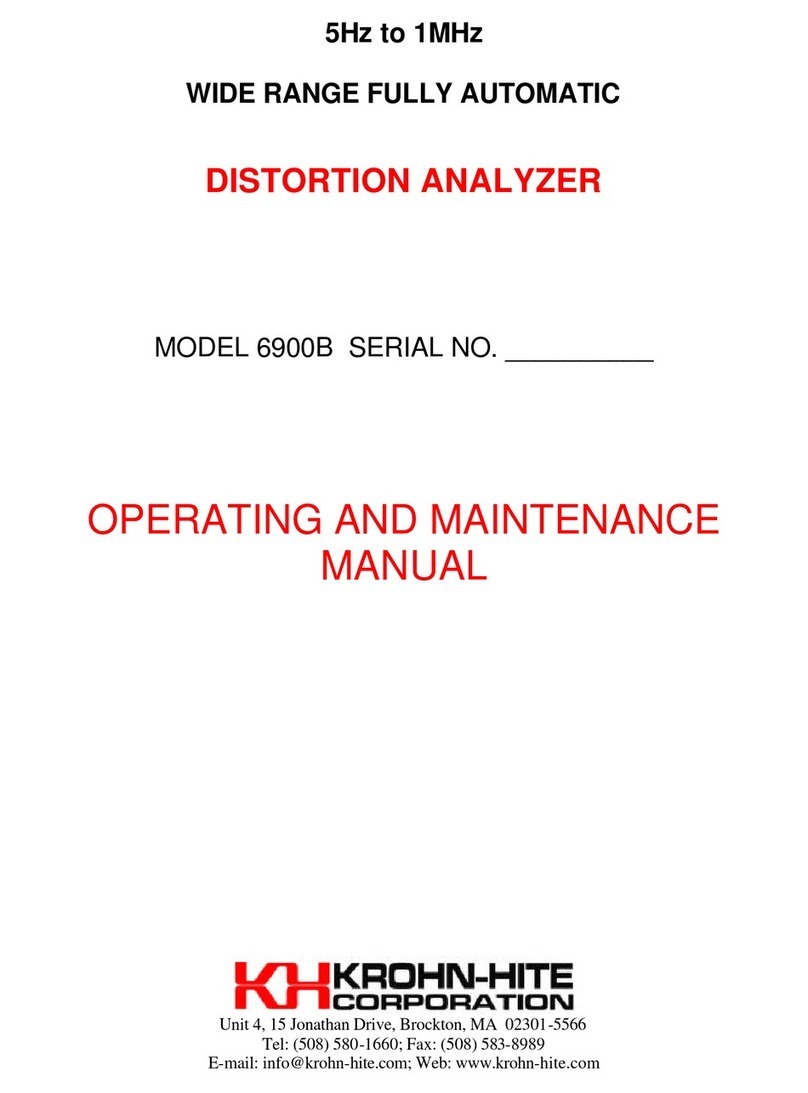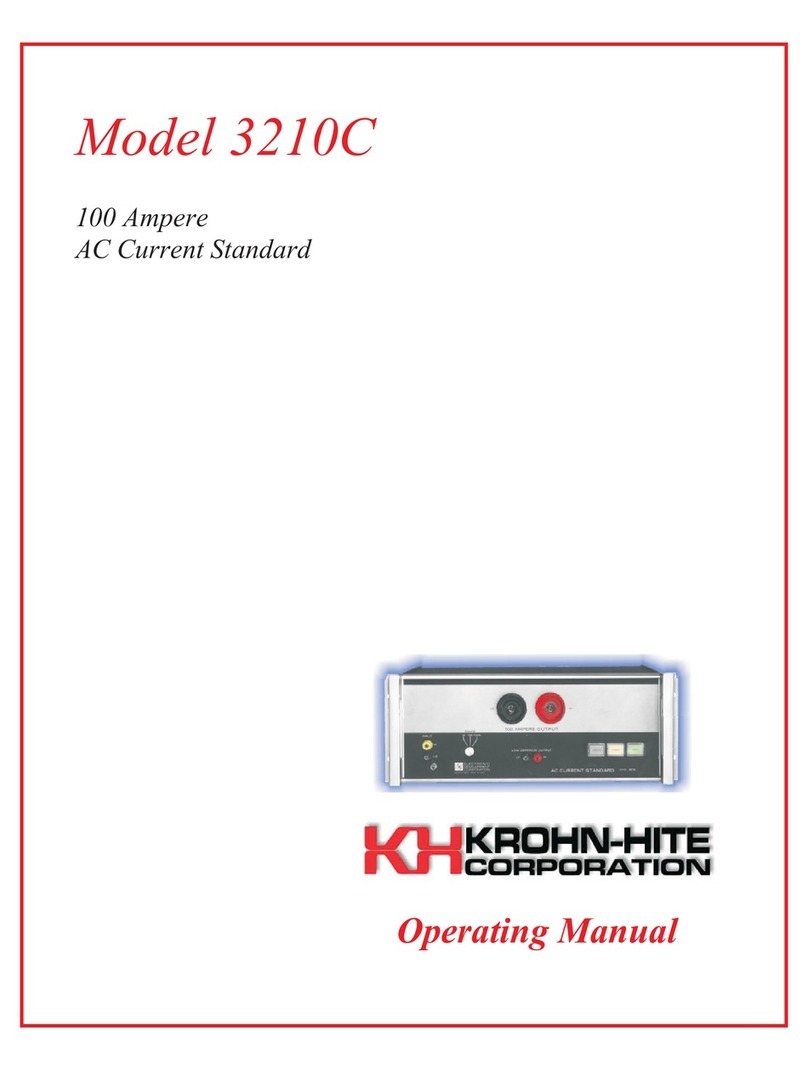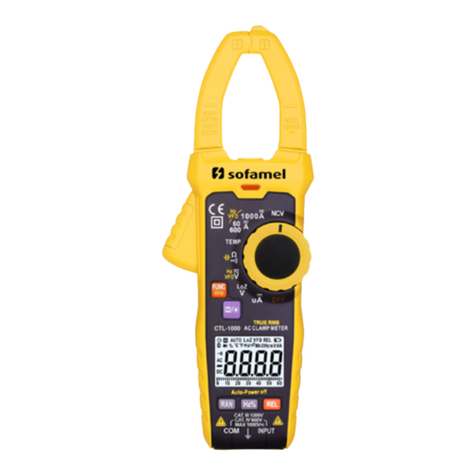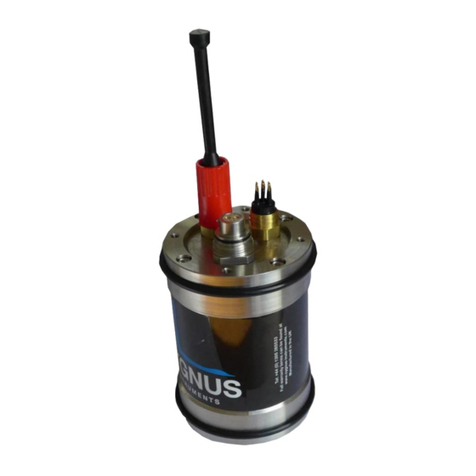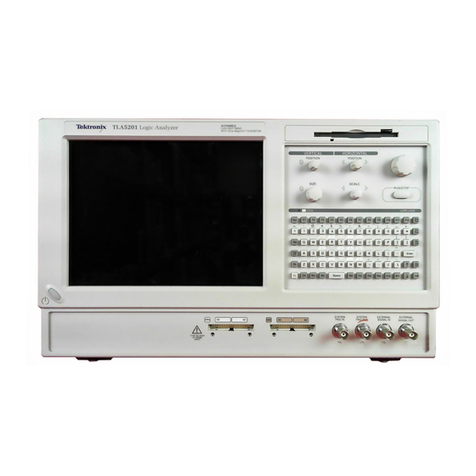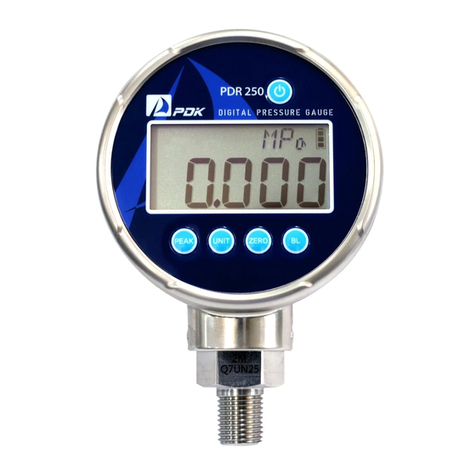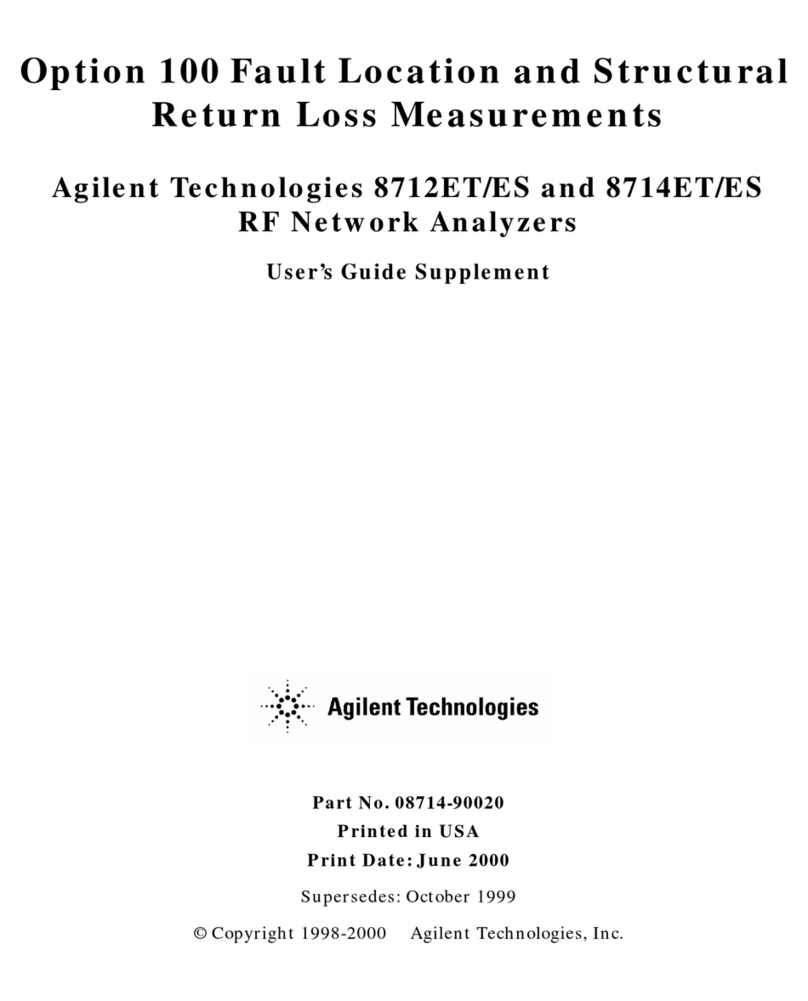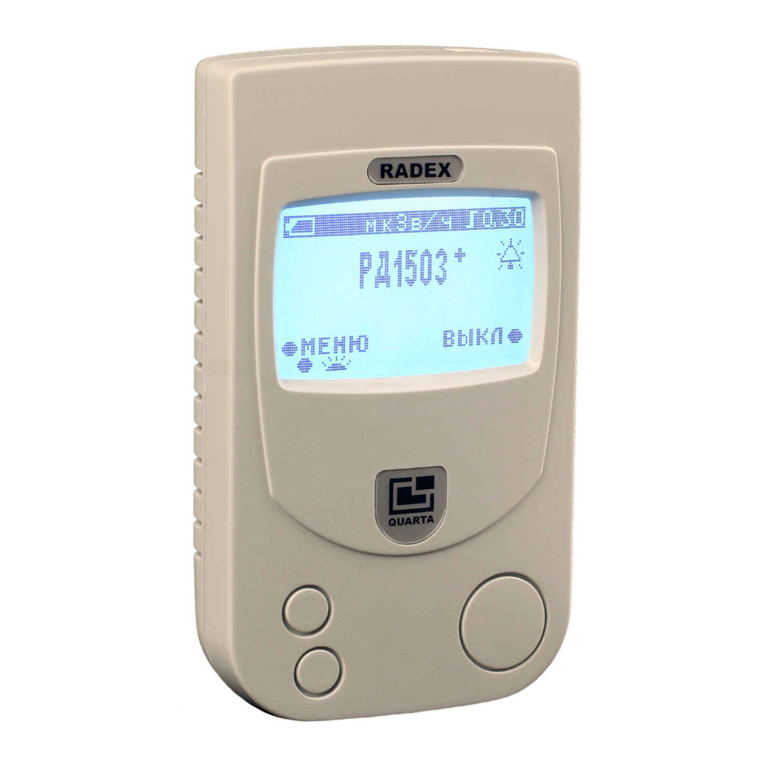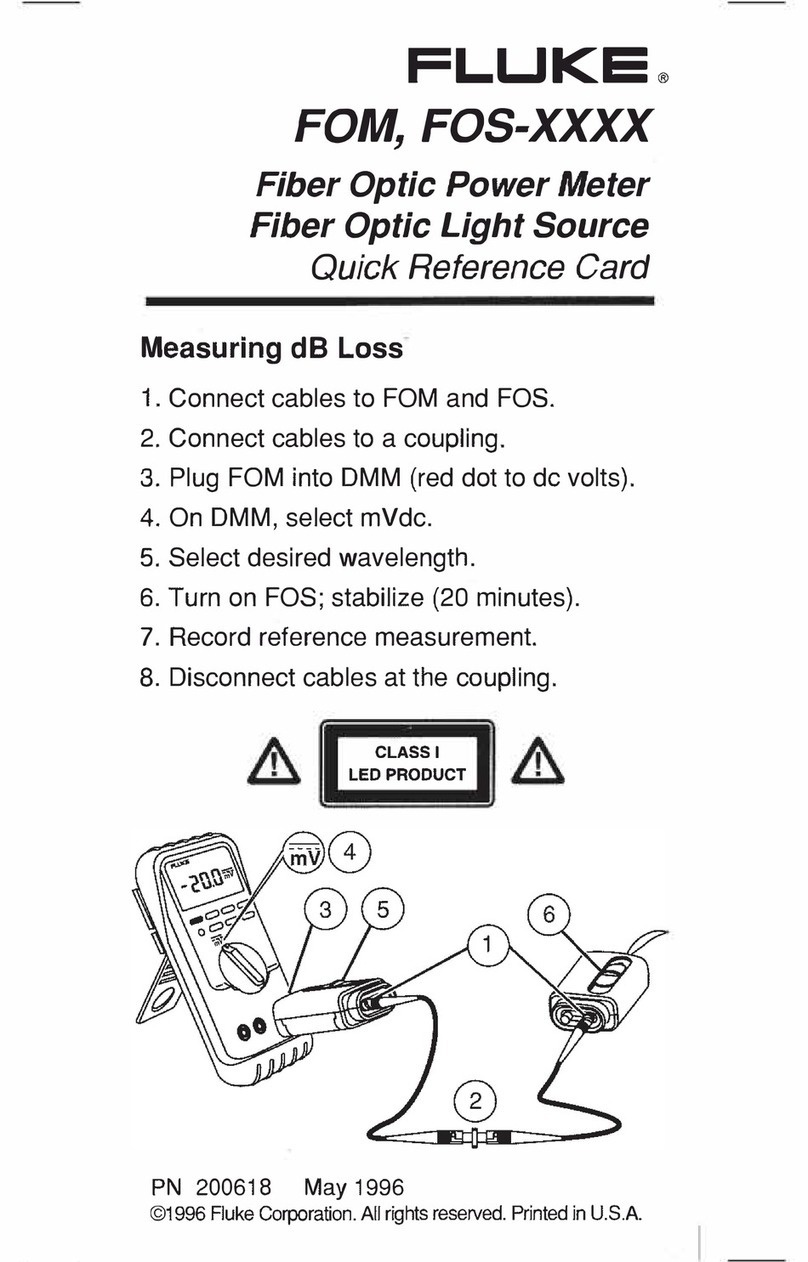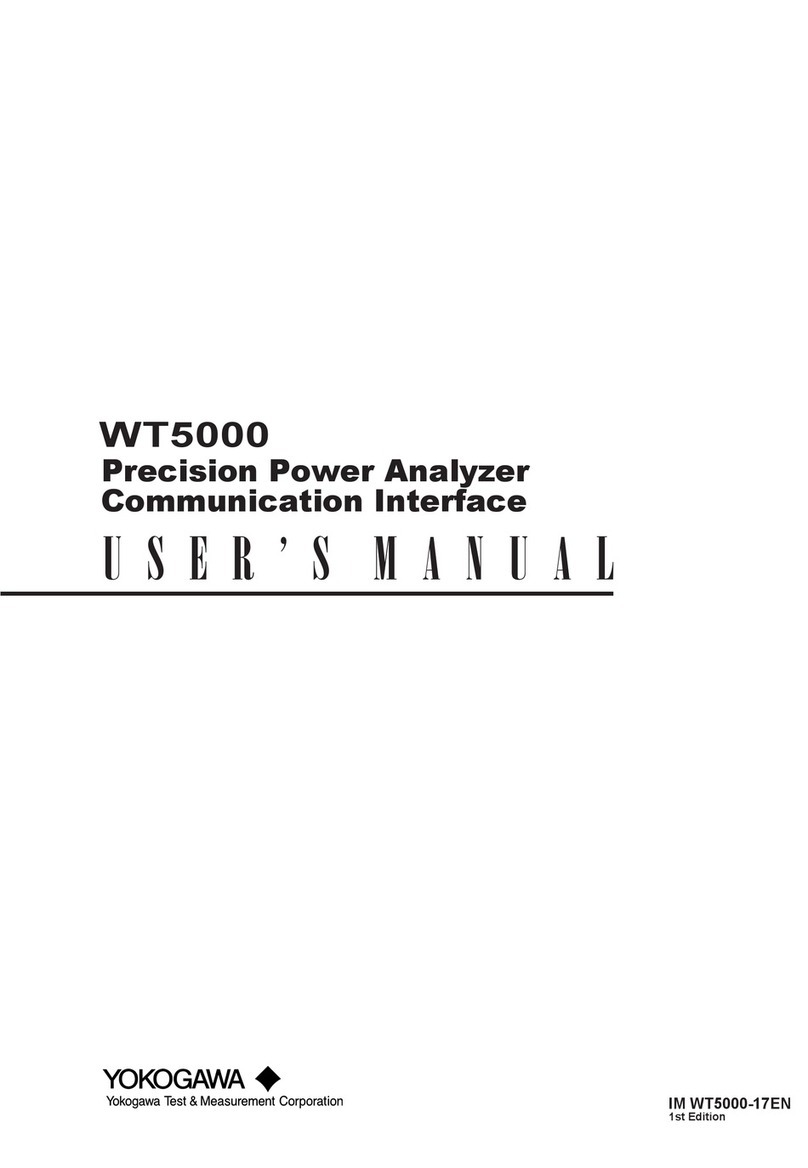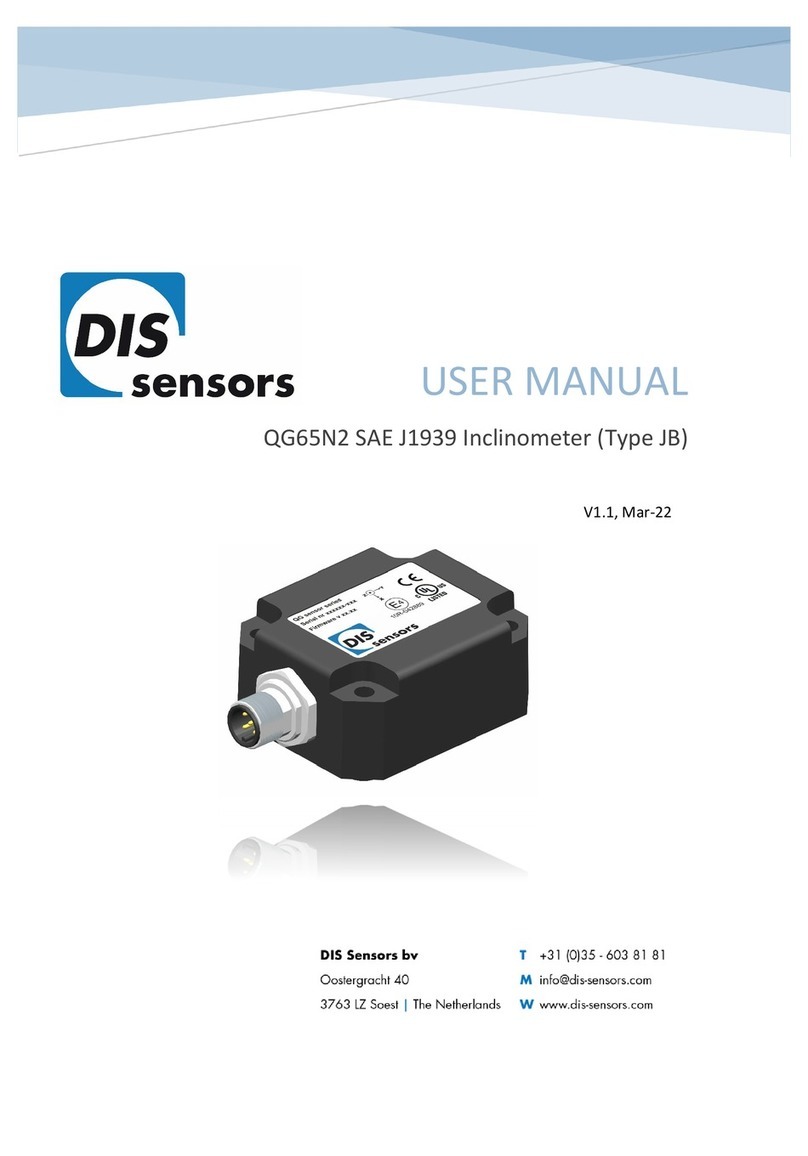Krohn-Hite 6500A Operating instructions

3SHz
TO
5MHz
DIGITAL
PHASEMETER
MODEL
6500A
SERIAL
NO.
OPERATING
AND
MAINTENANCE
MANUAL
U/US
INSU
KROHN-HITE
CORPORATION
AVON
INDUSTRIAL
PARK/BODWELL
STREET/AVON,
MASS.
02322
USA
PRINTED
IN
USA
—
APRIL
1983

Contents
ig
a
SESS
SS
EE
EES
EE
EES
CONTENTS
Section
Page
1
GENERAL
DESCRIPTION
4.5
ss:aiaee
Vise
4
eo
Se
Oa
Oe
1
2
OPERATION
4
wy
ee
008
2
O8-e
BE
cp
eRe
We
Wa
ea
ks
ROR
7
3
INCOMING
INSPECTION
AND
CHECKOUT
....c.+ccececce8
12
4
CIRCUIT
DESCRIPTION
(ei
sie
e860
ee
ereeece
fe
aig
wie
Secece
fatelen’
15
5
MAINTENANCE
oye
sts
aes
Gee
eS
WES
ER
OOS Dee
OR
we
Re
6
CALIBRATION
66
:sh-ere
is
'ec0:
die:
eee
is!
Os,
6:
8
8
6a
6
aos
See
eee
oy
LO
ILLUSTRATIONS
Figure
Page
1
Model
6500)
Pha
semeter
<0
ieee
Sige
ee
Salad
wa
eee
EE
2
Maximum
Phase
Error
vs
%
Harmonic
Distortion
.,........00.6
4
3
Phase
Error
vs,
Random
Noise
......
0.
ee
eee
eee
eeeeees
5
4
Typical
Performance
Curve
.....
0.
ce
eee
eer
eres
eceres
5
5
Operating
Controls,
Displays
and
Connectors.......000000%
6
6
Simplified
Block
Diagram
.......
ee
cee
eee
ee
ee
eee
ee
ee)
15
7
Attenuator
and
Fet
Input
Amplifier...
..
0...
2...
eee
eee
nea
16
8
Incorrect
Amplifier
Detector...
...
ce
eee
ee
cee
eee
cae
e
es
17
9
Switched
Filter
and
Hot
Carrier
Limiter
..,.........00e04.
17
10
danear
Amplitie?
sa.
ike
dace
ea
a
eae
we
Geewe
ee
dec
y,
918
LY
COM
Pavater
owe
hbk
ae
ey
eee
Re
PRE
e
eR
Re
ee
4
OND
12
Symmetry
Correction
Loop......
Gi
Bale,
ava
ae
ofa
Binet
aierayal
Oat
Saenis
19
13
BLP
eB
LOp
sic
e.
svar
eicar
aces
nal
aet
Merona
arte
wee
wear
eaan
Sapa
oe
e
a
20
14
Differential
Amplifier
and
Meter
Network
........0.0005
eee
20
15
Power
Supplies
......
ecb
Lee
Te.
otha,
Be
Sicbe,
OUR
Saha
on
ere
ete.
Se
16
Test
Points
and
Adjustable
Components.......
pie
tddee
hehe
uaa
26
17
Phase
vs,
Amplitude,
Input
A,
Test
Set-up
........00008
2.
29
18
Phase
vs.
Amplitude,
Input
B,
Test
Set-up
..........
eecee
29
19
Attenuator
Impedance
Adjustment
Test
Set-up.......502e000-
31
TABLE
Table
Page
2
Optional
BCD
Output
Pin
Connections
.....
tee
ee
eee
eee
sae
10
APPENDIX
Inside
Schematic,
Component
Diagrams,
Parts
List
,.......
Back
Cover

Model
6500
Phasemeter
Or?
te
wR
Figure
1.
Model
6500
Phasemeter
ii

Section
1
-
General
Description
SECTION
1
GENERAL
DESCRIPTION
4.1
INTRODUCTION
The
Krohn-Hite
Model
6500
Phasemeter
measures
the
phase
angle
between
two
waveforms
of
coincident
frequency,
over
a
range
of
3
Hz
to
5
MHz,
and
provides
a
typical
accuracy
of
0,02°,
with
0.01°
resolution,
A
5
digit
planar
gas
discharge
display
provides
direct
readout
of
the
phase
angle
from
000.
00°
to
360,00°,.
The
6500
accepts
input
voltages
from
0.01
volts
RMS
to
120
volts
RMS,
The
fluctuations
or
inconsistencies
normally
encountered
in
phase
angle
readings
near zero
and
360°
(sometimes
referred
to
as
ambiguity)
are
eliminated
by
a
unique
network
in
the
6500
that
permits
reading
s
as
small
as
0.01°
to
be
observed,
without
the
need
of
chang-
ing
ranges
or
180°
shifting.
In
addition,
the
circuitry
of
the
6500
significantly
reduces
the
effects
of
distortion
and
noise
on
phase
accuracy,
An
analog
output
on
the
rear
panel
provides
a
DC
voltage
equal
to
-10
mv/degree
phase,
for
use
with
an
external
meter
or
recorder,
An
optional
BCD
output
is
also
available,
A
read/hold
switch
also
provides
continuous
display
of
the
phase
angle
reading,
or
holding
of
the
reading
for
an
indefinite
period,
An
optional
rack-mounting
kit
(Part
No,
RK-319)
is
available
from
Krohn-Hite,
for
installing
the
Model
6500
in
a
standard
19''
rack-spacing.
The
phasemeter
is
carefully
inspected,
aged,
and
adjusted
before
shipment,
and
should
be
ready
for
operation
when
it
is
unpacked,
If it
appears
to
have
been
damaged
in
shipment,
make
a
claim
with
the
carrier,
and
notify
Krohn-Hite
immediately,
1.2
SPECIFICATIONS
Frequency
Range
3
Hz
to
5
MHz
Accuracy
(For
typical
performance,
refer
to
Figure
4)
Sinewave:
+0.1°+1
digit
from 20Hz
to
50kHz,
rising
to
+0.7°
at
100kHz;
+0.2°
at
10Hz;
for
any
amplitude
within
the
selected
voltage
range.
Above
100kHz,
+0.
7°
per
100kHz,
with
equal
amplitude
and
the
same
voltage
range
on
each
input.
Squarewave:
+0.1°+1
digit
from
10Hz
to
20Hz,
rising
to
+0.7°
at
100kHz;
for
any
amp-
litude
within
the
selected
voltage
range.
Above
100kHz,
+0.7°
per
100kHz,
with
equal
amplitude
and
the
same
voltage
range
on
each
input.

Model
6500
Phasemeter
Input
Signal
Amplitude
0,01
volts
RMS
to
120
volts
RMS
in
three
ranges:
0.
1-1,2,
1-12
and
10-120,
For
higher
input
voltages,
the
use
of
matched
attenuator
probes,
such
as
Tektronix
types
P6006,
P6007,
P6013A,
P6049A,
or
P6060
is
recommended,
(For
input
levels
between
0,01
volts
and
0,
|
volts
RMS,
the
0,
1-1,2
volt
range
is
used;
refer
to
Figure
4
for
typical
performance),
Input
Waveforms
Sine,
triangle,
square
and
positive
pulse
waveforms,
(The
phasemeter
is
triggered
on
the
negative-going
transition
of
the
input
waveform
in
both
sine
and
square
wave
positions
of
the
WAVEFORM
switch,
)
Input
Impedance
1
Megohm
in
parallel
with
50
pf.
Maximum
DC
Component
+200
volts
(for
higher
voltages,
the
use
of
matched,
attenuator
probes,
such
as
Tektronix
types
P6006,
P6007,
P6013A,
P6049A,
or
P6060
is
recommended),
Response
Time
constant:
Less
than
500
msec,
Settling
Time:
To
within
specified
accuracy,
within
one
to
eight
seconds,
dependent
upon
input
signal
amplitude.
Display
0,55
inch,
7-segment,
planar
gas
discharge
Display
Range
Continuous,
000,
00°
to
360,
00°
Resolution
0,01°
Repeatability
Better
than
+1
digit
Drift
None
VS
TIME
(30
days
without
CAL
reset):
Sine
Wave:
+0,
025°
from
20
Hz
to
100
kHz;
+0,
1°
at
10
Hz;
+0,
35°
per
100
kHz
above
100
kHz,
Square
Wave:
+0,
025°
from
10
Hz
to
5
kHz;
£0,
05°
to
100
kHz;
+0,
35°
per
100
kHz
above
100
kHz,

Section
1
-
General
Description
Analog
Output:
£0,
1
mv
(20,
01°)
VS
TEMPERATURE
(without
CAL
reset):
+0,01°/°C,
10
Hz
to
100
kHz;
40.
05°/°C
to
1
MHz;
+0.05°/°C
per
MHz
about
1
MHz,
Ambient
Temperature
Range
0°C
to
45°C
Analog
Output
(For
use
with
an
external
meter
or
recorder):
0
to
-3,6
volts
DC,
-10
mv
DC/
degree
phase,
impedance
250
ohms,
BCD
Output
(Optional)
Provides
18
lines
of
phase
angle
equivalent
BCD
output,
plus
polarity,
data
ready,
read/hold
and
read
rate
control
lines,
Compatible
with
DTL,
TTL
logic.
Programming
connector
AMP
type
200277-2
rear
panel
mounted;
mating
connector
(AMP
type
200276-2),
is
provided,
Panel
Controls
and
Adjustments
Front
Panel:
3
decade
push-button
RMS
VOLTS
RANGE
control
(each
channel),
plus
push-button
READ/HOLD,
WAVEFORM,
POWER,
0°
CAL
and
360°
CAL,
Rear
Panel:
115/230V
LINE,
CHASSIS/F
LOATING,
Terminals
Front
Panel:
BNC
for
A
input,
B
input,
Rear
Panel:
BNC
for
A
input,
B
input,
analog
output,
AMP
type
200277-2
for
BCD
output
(optional),
Power
Requirements
105-125
volts,
or
210-250
volts,
single
phase,
50-60
Hz,
40
watts,
Dimensions
and
Weights
Model
6500:
16-1/2"
wide,
3-1/2"
high,
16"
deep,
15
1lbs/6,
8
Kgs
net,
18
lbs/8
Kgs
shipping,
Optional
Rack
Mounting
Kit
Part
No.
RK-319,
permits
installation
of
the
6500
into
a
standard
19"
rack
spacing,

Model
6500
Phasemeter
71.3
FACTORS
AFFECTING
PHASEMETER
ACCURACY
1.3.1
Inconsistencies
in
Meter
Readings
Near
0°
and
360°
A
problem
affecting
a
phasemeter's
accuracy
is
the
inability
of
the
phasemeter
cir-
cuit
to
detect
relatively
small
phase
angles,
resulting
in
meter
fluctuations
or
incon~
sistencies
in
readings.
The
6500
overcomes
this
inconsistency
(or
ambiguity
as
it
is
sometime
referred
to)
by
using
a
specially
designed
network
that
permits
meas-
urements
as
small
as
0,019
to
be
made
without
meter
fluctuations
or
repeatability
errors,
and
eliminates
the
need
for
multiple
meter
ranges,
or
shifting
of
the
meter
scale,
1.3.2
Distortion
Present
on
the
input
Signal
If
there
is
distortion
present
on
one
of
the
signals,
a
phase
error
may
be
introduced,
depending
on
the
relationship
between
the
fundamental
and
its
harmonics,
If
the
amplitudes
of
all
odd
or
even
harmonics
add
up
to
zero
at
the
negative
zero
crossing
of
the
fundamental,
then
the
harmonics
will
produce
no
phase
error,
If
the
resultant
of
the
amplitudes
is
not
zero,
however,
it
will
cause
a
shift
in
the
zero
crossing
of
the
input
waveform,
(Worst
case
would
occur
when
the
maximum
of
the
harmonic
coincides
with
the
negative
zero
crossing
of
the
fundamental.)
The
effect
of
an
even
harmonic
will
not
only
shift
the
zero
crossing
of
the
waveform,
but
also
alter
the
symmetry
of
the
comparator
or
detector
output,
If
a
symmetry
control
loop
is
added
to
the
phasemeter
circuit,
the
effect
of
the
even
harmonic
on
accuracy
can
be
mini-
mized,
The
6500
uses
the
type
of
symmetry
loop
mentioned
above,
The
effect
of
an
odd
order
harmonic,
however,
is
not
as
easily
corrected,
An
odd
order
harmonic
simply
shifts
the
phase
of
the
output
of
the
comparator
or
detector
loop.
Since
the
symmetry
is
not
affected
there
is
no
way
to
detect
any
phase
error,
Figure
2
shows
the
maximum
phase
error
introduced
versus
the
percentage
of
har-
monic
distortion
present
on
each
input
channel,
6°
°
2
r
CHANNELS
AOR
B
ALL
ODD
HARMONICS
~
4
rf
uy
xc
oO
WwW
Qa
Ze
4
a
oO
a
e&
ld
o
w
COASINE
A
4'™
HARMONIC
a
ONIG
yt
=
is
CHANNEL
a7
|
ALL
EVEN
HARMONICS
‘
!
2
3
4
5 6 7 8
9
10
PERCENT
DISTORTION
Figure
2,
Maximum
Phase Error
vs
%
Harmonic
Distortion
(Worst
case
would
occur
when
the
maximum
of
the
harmonic
coincides
with
the
negative
zero
crossing
of
the
fundamental,
)

Section
1
-
General
Description
SLE
EN
a
EE
EE
TTD
1.3.3.
Noise
Present
on
the
Input
Signals
Another
problem
affecting
phase
accuracy
is
random
noise.
If
there
is
a
sufficient
noise
level
on
either
input
(or
both),
false
triggering
will
occur
and
a
phase
error
is
introduced,
The
6500
uses
special
circuits
plus
filtering
to
minimize
the
effects
of
noise
on
the
phase
accuracy.
Typically,
any
broadband
noise
present
on
both
inputs
40
db
down from
the
input
signals
will
produce
only
a
0.05°
error,
Figure
3
gives
a
typical
curve
for
phase
error
versus
input
frequency,
for
a
signal
to
noise
ratio
of
10:1
on
both
inputs.
1.3.4
Typical
Performance
The
typical
performance
of
the
Model
6500
is
illustrated
in
Figure
4,
3°
PHASE
ERROR
(DEGREES)
lOHZ
IOOHZ
IKHE
1OKHE
1OOK
Hz
INPUT
FREQUENCY
Figure
3.
Phase
Error
vs,
Random
Noise
res
nee
=
50
20
10
=
5.0
iH
g
8
2.0-—-—+--—
8
RB
(«No
g
=
8
08
8
INPUT
80%
OF
RMS
VOLTS
RANGE
¥
ooh
=
x
Oty
\
‘.
0.05
0.02
0.1¥
—120¥
INPUT.
0.0}
3
10
1oo
IK
10K
100K
a
5M
FREQUENCY
(Hz)
Figure
4,
Typical
Performance

Model
6500
Phasemeter
OOOVOKMOOYONC
POWER
SWITCH
WAVEFORM
SWITCHES
RMS
VOLTS
RANGE
SWITCHES
READ/HOLD
SWITCHES
O°
CAL
SWITCH
0°
CAL
SCREWDRIVER
ADJUST
360°
CAL
SWITCH
»
360°
CAL
SCREWDRIVER
ADJUST
DIGITAL
PANEL
METER
SET
RANGE
INDICATORS
OQ@GOOOQOOOO)
CHANNEL
A
INPUT
(BNC)
CHANNEL
B.
INPUT
(BNC)
CHANNEL
B
REAR
INPUT
(BNC)
ANALOG
DC
OUTPUT
GROUND
SWITCH
(CHASSIS/FLOATING)
CHANNEL
A
REAR
INPUT
(BNC)
FUSE
LINE
SWITCH
POWER
RECEPTACLE
BCD
OUTPUT
(OPTIONAL;
AMP
TYPE
200277
-2)
Figure
5,
Operating
Controls,
Displays
and
Connectors

Section
2
-
Operation
SECTION
2
OPERATION
2.1
POWER
REQUIREMENTS
The
Model
6500
Phasemeter
may
be
used
with
either
a
105
-
125
volt,
50
-
400
Hz
line
or
a
210-250
volt
50
-
400
Hz
line.
The
line
voltage
can
be
selected
by
opera-
tion
of
the
LINE
switch
on
the
rear
panel.
When
the
line
voltage
is
115
volts,
a
0.5
ampere
fuse
is
required;
when
the
line
voltage
is
220
volts,
a
0.25
ampere
fuse
should
be
used.
2.2
OPERATING
CONTROLS,
DISPLAYS
AND
CONNECTORS
(See
figure
5)
2.2.1
Front
Panel
Controls
POWER:
On-off
pushbutton
switch.
WAVEFORM:
Two-position
push
button
switch
selects
sine
wave
or
Square
wave
mode
of
operation.
When
sine
or
triangle
waveforms
are
used
as
input
signals,
the
WAVEFORM
switch
should
be
set
for
\U;
when
square
waves
or
positive
pulses
are
used,
the
WAVEFORM
switch
is
set
to
the
"1,
mode.
RMS
VOLTS
RANGE:
Three
position
push
button
switch
(each
channel)
for
selecting
input
voltage
ranges
from
0.01
volts
RMS
to
120
volts
RMS,
For
input
levels
between
0,01
volts
and
0,
1
volts
RMS,
the
0,
1-1,
2
volt
range
is
used,
(Refer
to
Figure
4,
Page
5
for
typical
performance.)
The
voltage
ranges
are
0,
1-1,2,
1-12
and
10-120,
The
voltage
range
may
be
extended
using
Tektronix
matched
probes,
(Types
P6006,
P6007,
P6013A,
P6049A,
or
P6060,
)
READ/HOLD:
Two
-
position
push
button
switch.
In
the
READ
mode,
the
phase
angle
being
measured
is
continuously
displayed
on
the
readout.
In
the
HOLD
mode,
the
last
reading
is
held
for
an
indefinite
period.
0°
CAL:
Push-button
hold-release
switch
for
checking
0°
calibration.
A
front
panel
screwdriver
control
is
also
provided
for
adjustment
of
zero
scale.
360°
CAL:
Push-button
hold-release
switch
for
checking
360°
(full
scale)
calibra-
tion,
A
front
panel
screwdriver
control
is
also
provided
for
adjustment
of
full
scale.
2.2.2
Rear
Panel
Controls
LINE:
Two-position
slide
switch
for
selecting
115
or
230
volt
operation,
CHASSIS/FLOATING:
Two-position
slide
switch
for
selecting
chassis
or
floating
ground,
In
the
FLOATING
mode,
signal
ground
is
isolated
from
chassis
ground,

Model
6500
Phasemeter
EIS
a
a
TEC
DTG
TOT
TTT
OI
TOT
ETE
TE
TE
ITE
TTS
2.2.3
Displays
5
digit
planar
gas
discharge
displays
the
phase
angle
being
measured,
in
degrees,
from
000,
00°
to
360,
00°,
SET
RANGE:
Front
panel
LED
indicator,
(one
for
each
channel)
illuminates
when
the
input
voltage
for
that
particular
channel
is
either
above
or
below
the
selected
range.
2.2.4
Connectors
Front
panel:
BNC
connector
for
each
channel
input.
Rear
panel:
BNC
connector
for
each
channel
input.
ANALOG
OUTPUT,
BNC,
equal
to
-10
mv/degree
phase,
for
use
with
external
meter
or
recorder,
BCD
OUTPUT
(optional),
AMP
type
200277-2
connector,
Power
Receptacle
for
line
cord,
2.3
OPERATION
To
operate
the
6500
phasemeter
proceed
as
follows:
1,
Make
appropriate
power
connections
(see
Section
2.
1).
2,
Push
the
POWER
switch
to
the
ON
(recessed)
position,
and
allow
the
unit
to
warm
up
for
at
least
30
minutes
to
achieve
rated
accuracy.
3.
Set
the
READ/HOLD
switch
to
the
READ
position.
4.
Push
the
0°
CAL
button.
Adjust
the
0°
screwdriver
control
(if
necessary)
so
that
the
meter
reads
000.
00°,
5.
Push
the
360°
CAL
button,
Adjust
the
360°
screwdriver
control
(if
necessary)
so
that
the
meter
reads
360.
00°,
After
the
unit
has
been
allowed
to
warm
up,
connect
the
reference
signal
to
the
A
input
and
the
signal
to
be
measured
to
the
B
input.
(It
is
recommended
that
matched,
equal
length,
coaxial
input
cables
be
used,
asa
difference
in
length
or
cable
capacitance
may
affect
the
phasemeter
accuracy,
particularly
at
high
frequencies.
As
an
example,
consider
two
cables
that
are
the
same
type
(approximately
30
pf/foot)
but
of
different
length.
A
difference
of
one
foot
between
the
two
cables
will
create
an
error
at
100
KHz
of
about
0.
06°.)
After
connecting
the
cables
to
the
two
input
channels,
set
the
WAVEFORM
switch
to
the
desired
mode.
Inthe
\,
mode,
the
phasemeter
will
measure
phase
angles
between
sine
waves,
a
sine
and
triangle
wave,
or
triangular
waves.
in
the
Ly
mode,
square
waves,
a
square
wave
and
positive
pulse,
or
positive
pulses
should
be
used,
If
a
sine
wave
is
used
in
the
a
mode
or
vice-versa,
an
error
of
several
degrees
can
be
expected,
,
After
selecting
the
proper
WAVEFORM
mode,
set
the
VOLTS
RMS
RANGE
buttons
to
a
position
where
the
LED
indicator
is
extinguished.
This
will
indicate
that
the
input
signal
level
is
within
the
proper
range.
The
6500
will
now
display
the
phase
angle,
in
degrees,
between
the
two
input
signals.
Refer
to
Section
1
for
the
appropriate
accuracy
specifications.
For
phase
angle
readings
passing
through
360,
00°,
the
meter
reading
will
remain
at
the
360,
00°
end
until
the
reading:is
approximately
364.
00°.
At
this
point
the
meter
reading
will
shift
itself
360°
to
its
corresponding
low
end,
or
004.
00°.

Section
2
-
Operation
mmm
TT
Conversely,
if
the
meter
reading
passes
through
000.
00°,
the
meter
reading
will
remain
at
the
low
end
until
about
-004.
00°,
where
it
will
then
shift
itself
360°
to
a
new
reading
of
356.00.
This
feature
allows
readings
to
be
taken
at
or
near
0°
or
360°
without
meter
fluctuations.
It
is
also
possible
to
shift
the
phase
reading
as
follows
(applicable
to
sine
wave
position
of
WAVEFORM
switch,
only):
If
the
meter
is
reading
near
0°,
anda
reading
near
360°
is
de
sired,
simply
depress
the
360°
CAL
button
for
about
3
seconds,
then
release.
If
the
meter
reading
is
near
360°,
anda
reading
near
0°
is
desired,
simply
depress
the
0°
CAL
button
for
about
3
seconds,
and
then
release,
When
the
input
voltage
level
exceeds
120
volts
RMS,
or
the
DC
component
of
the
signal
exceeds
+200
volts,
the
input
range
of
the
6500
can
be
extended
with
Tektronix
or
similar
type
matched
probes.
(Tektronix
types
P6006,
P6007,
P6013A,
P6049A
or
P6060,
or
equivalent).
The
probe
should
match
an
input
resistance
of
1
megohm
and
should
be
adjustable
to
match
an
input
capacitance
up
to
50
pf.
The
broadbanding
screw
should
be
adjusted
for
0°
(or
360°)
reading
with
a
signal
directly
on
one
of
the
phasemeter
inputs
and
the
probe
(on
the
other
phase
meter
input)
connected
to
the
same
signal.
Reverse
the
procedure
for
a
probe
on
the
other
phase
meter
input,
For
optimum
accuracy,
the
probe(s)
should
be
adjusted
at
each
frequency
used
before
making
phase
measurements.
For
less
stringent
accuracy
requirements,
the
probe(s)
need
not
be
adjusted
carefully.
If
a
10
Megohm
probe
(or
10
Megohm
source
impedance)
is
used
on
one
channel
only,
below
200
Hz,
or
a
1
Megohm
source
impedance
below
20
Hz
on
one
channel
only,
an
appreciable
error
is
introduced,
because
of
the
phasemeter
input
coupling
capacitors.
(10
Megohms
will
produce
approximately
0.
8°
at
10
Hz).
This
error
can
be
cancelled
by
adding
an
equivalent
source
impedance
in
series
with
the
input
to
the
other
channel
at
these
low
frequencies,
(If
left
in
at
higher
frequencies,
it
must
be
accurately
broadbanded
with
a
shunt
capacitance)
2.4
BCD
OUTPUT
(OPTIONAL)
A
digital
programming
connector
(AMP
type
200277-2),
is
mounted
on
the
rear
panel,
and
provides
an
equivalent
BCD
output
of
the
front-panel
display,
plus
four
additional
data
control
lines.
A
total
of
22
programming
lines
plus
3
lines
of
the
programming
ground
return
are
provided,
A
total
of 18
lines
are
used
to
provide
the
BCD
equivalent
output
of
the
5
digit,
front
panel
display.
Each
digit,
with
the
exception
of
the
100!s
digit,
is
represented
by
four
output
lines,
and
is
binary-coded
in
a
1-2-4-8
format,
The
100!s
digit
is
rep-
resented
by
two
lines,
coded
in
a
1-2
format,
The
four
additional
data
control
lines
provide
the
following
functions:
1,
POLARITY
(OUTPUT):
The
output
logic
level
of
this
line
remains
ina
"High"
state
when
the
displayed
phase
angle
is
positive;
output
level
will
convert
to
a
"Low"
state
if
the
phase
angle
display
goes
negative,
(Con't
on
Page
11)
8

Model
6500
Phasemeter
Table
1.
OPTIONAL
BCD
OUTPUT
PIN
CONNECTIONS
(Using
AMP
type
200277-2
Connector)
Pin
Letter
Function
Description
A
000,01
000,
02
000,
04
000,
08
DIG,
GND.
000,
10
tT
ye
baw
000,
20
a
000,
40
000,
80
DIG,
GND.
001,
00
Phase
Angle
BCD
OUTPUTS
002,
00
004,
00
008,
00
DIG.
GND,
010,
00
020,
00
040,
00
080,
00
100,
00
4
%e
¢s
GHuwy
zee
sz
200,
00
N
Polarity
(Output)
''High"
for
pos,
angle
"Low"
for
neg,
angle
a
Conversion
Complete
"High!
for
data
ready
(Output)
''Low'
for
conversion
b
Transfer
Inhibit
"Low"
for
data
read
(Input)
"High"
or
open
for
data
hold
c
Read
Rate
(Input)
"High"
for
4
cts/sec
L
"Low"
for
20
cts/sec
10

Section
2
-
Operation
2,
CONVERSION
COMPLETE
(OUTPUT):
The
output
logic
level
of
this
line
will
remain
''Low'
during
the
Digital
Panel
Meter’
s
measurement
or
conversion
cycle;
the
output
will
convert
to
a
''High"
state
when
conversion
of
data
is
com-
pleted,
3.
TRANSFER
INHIBIT
(INPUT):
This
input
is
used
in
conjunction
with
the
front
panel
READ/HOLD
switch,
and
provides
remote
control
of
the
READ/HOLD
function,
When
the
front
panel
READ/HOLD
switch
is in
the
READ
mode,
the
TRANSFER
INHIBIT
control
line
is
inoperative;
when
the
switch
is in
the
HOLD
mode,
a
''Low'!
level
applied
to
the
TRANSFER
INHIBIT
input
line will
allow
both
the
front
panel
display
and
the
BCD
outputs
to
be
continuously
updated
by
new
data.
A
''High"
level
applied
to
the
TRANSFER
INHIBIT
line
will
hold
or
maintain
the
last
data
displayed,
plus
the
equivalent
data
on
the
BCD
outputs.
4.
READ RATE
(INPUT):
This
input
is
provided
for
selection
of
the
DPM's
read/
rate,
A'!High'
level
applied
to
the
READ/RATE
input
will
effect
a
DPM
read/
rate
of
4
counts/second;
a
''Low'!
level
will
convert
the
read/rate
to
20
counts/
second,
The
logic
levels
for
all
OUTPUT
lines
are
as
follows:
OV
=
Low
=
0,5V;
L..
=
10mA
sink
2,4V
=
High
=
5,5V;
R
=
6K
Ohm
source
The
logic
levels
for
all
INPUT
lines
are
as
follows:
OV
=
Low
=
0.
8V;
1...
=
1l,6mA
sink
2,0V
=
High=
5,0V;
I
=
0,
lmA
source
A
mating
connector
for
the
AMP
type
200277-2
(Part
No.
AMP
type
200276-2)
is
provided,
il

Model
6500
Phasemeter
SECTION
3
INCOMING
INSPECTION
AND
CHECKOUT
3.1
INTRODUCTION
The
following
procedure
is
used
to
verify
that
the
phasemeter
is
operating
within
specifications,
both
for
incoming
inspection
and
for
routine
servicing.
Tests
should
be
made
with
all
covers
in
place,
and
the
procedure
given
below
should
be
followed
in
sequence,
SPECIAL
NOTE
As
an
alternate
to
the
following
procedure,
a
Primary
Phase
Angle
Standard
such
as
the
Dytronics
Model
311/RT-1/717S
may
be
used
for
accuracy
measurements
between
30
Hz
and
10
KHz.
A
second
alternative
is
the
use
of
a
Computing
Counter
System
such
as
the
Hewlett
Packard
Model
5360A
when
used
with
a
suitable
phase
shifting
circuit),
3.2
EQUIPMENT
REQUIRED
(a)
10
Hz
to
100
KHz
low
distortion*
oscillator,
with
output
adjustable
from
0,
1
volts
RMS
to
10
volts
RMS,
Krohn-Hite
Model
4000A
or
equivalent.
(b)
10
Hz
to
10
MHz
sine
wave
oscillator,
with
two
outputs,
180°
apart,
and
output
voltage
adjustable
from
zero
to
1,5
volts
RMS,
Hewlett
Packard
Model
654A
or
equivalent,
(c)
Variable
phase
generator,
capable
of
providing
two
sine
wave
and/or
square
wave
outputs,
with
adjustable
phase
angle
from
0°
to
360°
Hewlett
Packard
Model
203A
or
equivalent,
(ad)
10
Hz
to
5
MHz
square
wave
signal
source,
with
two
outputs,
not
in
phase,
and
output
voltage
at
least
1
volt
peak
to
peak.
(If
a
signal
source
with
two
outputs
is
not
available,
a
single
source
may
be
used
with
a
suitable
balanced
transformer
such
as
the
North
Hills
Electronics
Model
50-201RA,
to
produce
two
outputs
ap-
proximately
180°
apart.
)
{e)
50
ohm
terminators,
(2
required),
Tektronix
type
011-0055-00
or
equal,
(For
use
with
above
transformer
only).
{f)
Calibrated
DPM,
zero
to
-3.6
volts
DC,
with
0,
1
millivolt
resolution,
Newport
Model
2000AS
or
equal.
(g)
Matched
set
of
coaxial
cables
(BNC)
for
connections
to
inputs.
(Same
length
and
impedance).
*
Less
than
0.01%
from
10
Hz
to
20
KHz,
rising
to
0.
1%
at
100
KHz.
12

Section
3
-
Incoming
Inspection
and
Checkout
3.3
PROCEDURE
After
allowing
the
instrument
to
warm
up
for
at
least
30
minutes,
set
the
controls
to
the
following
positions:
WAVEFORM
N
RMS
VOLTS
RANGE
(input
A)
0.1-1.2
RMS
VOLTS
RANGE
(input
B)
0.1-1.2
READ/HOLD
READ
GROUND
SWITCH
CHASSIS
3.3.1
Meter
Calibration
Press
the
0°
CAL
button.
Adjust
the
screwdriver
control
on
the
front
panel
until
the
meter
reads
000.00°.
Press
the
360°
CAL
button.
Adjust
the
screwdriver
control
on
the
front
panel
until
the
meter
reads
360.
00°.
3.3.2
100
Hz
Sine
Wave
Check
Connect
the
output
of
the
low
distortion
oscillator
to
both
inputs
of
the
phasemeter,
using
the
set
of
matched
cables,
Set the
oscillator
frequency
to
100
Hz,
output
amplitude
to
0.
1
volts
RMS,
Depress
the
0°
CAL
button
momentarily,
then
release;
meter
should
read
000.
00°
+0.05°.
Depress
the
360°
CAL
button,
then
release;
meter
should
read
360,009
+0.05°.
Repeat
procedure
at
20
Hz,
1
KHz
and
10
KHz,
3.3.3
10
Hz
Sine
Wave
Check
Repeat
procedure
of
3.3.2
at
10
Hz;
meter
tolerance
is
+0.
2°,
3.3.4
100
KHz
Sine
Wave
Check
Repeat
procedure
of
3,3,2
at
100
KHz;
meter
tolerance
is
+0.
2;
3.3.5
High
Frequency
Sine
Wave
Check
Connect
the
outputs
of
the
10
MHz
oscillator
to
the
phasemeter
inputs,
using
the
matched
cables,
Set
the
oscillator
frequency
to
200
KHz.and
both
output
voltages
to
0,1
volts
RMS,
Observe
the
phase
reading.
Reverse
the
two
inputs,
Observe
the
phase
reading.
The
Total™
of
both
readings
should
equal
360,
00°
+2.
8°
at
200
KHz.
Repeat
this
procedure
at
500KHz,
1
MHz,
2MHz
and
5
MHz.
Tolerance
of
the
total
reading
is
+7°
at
500
KHz,
+14°
at
1
MHz,
28°
at
2
MHz
and
+70°
at
5MHz.
Disconnect
the
oscillator.
3.3.6
100
Hz
Square
Wave
Check
Set the
phasemeter
WAVEFORM
switch
to™,
.
Connect
the
outputs
of
the
square
wave
Signal
source
to
the
phasemeter
inputs.
(If
a
signal
source
with
two
outputs
is
not
available,
proceed
as
follows:
Connect
a
single
square
wave
source
to
the
input
of
a
suitable
balancing
transformer,
as
described
in
3.2.c.
The
output
im-
pedance
(Z)
of
the
signal
source
should
approximately
equal
the
input
Z
of
the
transformer.
Some
transformers
require
a
load
on
their
outputs
equal
to
their
output
Z.
Check
manufacturer!
s
specifications),
Set
the
signal
source
output
voltage
for
1
voit
peak
to
peak
at
the
phasemeter
inputs.
Observe
the
phase
read-
ing.
Reverse
the
inputs
and
observe
the
reading.
The
Total*
of
both
readings
*
If
both
readings
are
in
error
by
E
degrees,
the
total
will
be
off
by
(2xE)
degrees.
Therefore
the
tolerance
of
the
total
is
twice
the
specified
accuracy.
(See
Section
1,
2)
13

Model
6500
Phasemeter
SLES
ENE
TSG
LE
IEEE
TESTIS
DL
LEY
ELLE
LIS
GISELE,
SITY
TT
ITT
TT
ESE
TT
TR
SS
TTT
should
equal
360°
£0.1°.
Repeat
this
procedure
at
10
Hz,
1
KHz
and
5
KHz,
Total
of
the
two
readings
should
be
360°
+0.
1°
3.3.7
20
KHz
Square
Wave
Check
Repeat
the
procedure
of
3.
3.6
at
20
KHz;
total
of
the
two
readings
should
be
360°
+0,
2°.
3.3.8
High
Frequency
Square
Wave
Check
Repeat
the
procedure
of
3.3.6
at
200
KHz,
500
KHz,
1
MHz,
2
MHz,
and
5
MHz.
Tolerance
of
the
total
reading
from
360°
should
be
+2.
8°
at
200
KHz,
+7°
at
500
KHz,
+14°
at
1
MHz,
+28°
at
2
MHz
and
+70°
at
5
MHz.
Disconnect
square
wave
source
(and
transformer
if
applicable).
3.3.9
Analog
Output
Check
Set
the
phasemeter
WAVEFORM
switch
to
“WV
.
Connect
the
sine
wave
outputs
of
the
variable
phase
generator
to
the
phasemeter
inputs.
Set
the
generator
frequency
to
1
KHz,
output
voltage
to
1
volt
RMS,
Connect
the
DVM
to
the
analog
output,
Check
to
see
that
the
analog
output
is
approximately-10
mv
/degree
for
any
phase
angle
between
0°
and
360°,
3.3.10
Read/Hold
Control
Check
Set
the
output
angle
of
the
variable
phase
generator
to
some
angle
between
0°
and
360°,
Press
the
front
panel
HOLD
button.
Remove
the
phasemeter
inputs.
The
last
meter
reading
should
remain
stored
until
the
READ
button
is
pressed,
NOTE
The
analog
output
voltage
will
still
vary
with
a
change
in
the
input
phase
angle,
even
though
the
meter
display
is
in
the
HOLD
mode.
3.3.11
Optional
BCD
Output
Check
The
operation
of
the
phasemeter's
optional
BCD
output
can
be
checked
by
connecting
the
variable
phase
generator
to
the
phasemeter
inputs,
and
measuring
the
logic
levels
on
the
respective
pins
for
the
meter
readings
listed
in
Table
1,
Page
10,
It
may
be
nece
ssary
to
use
a
large
angle
to
measure
the
BCD
outputs
of
phase
angles
less
than
1,0°,
for
example,
200,01,
200.02,
etc.
Be
sure
to
connect
the
common
or
ground
lead
of
the
DVM
to
the
BCD
output
Digital
Ground
(pins
E,
L
or
§),
To
check
the
''Conversion
Complete"
output
(pin
a),
the
logic
level
should
remain
“high!
when,
the
meter
reading
is
stable,
To
check
the
''low'"
condition,
depress
either
the
0°
CAL
or
360°
CAL
button;
the
level
at
pin
a
should
go
"low"
while
the
meter
reading
is
converting,
To
check
the
'Transfer
Inhibit"
input,
place
the
READ/HOLD
switch
in
the
HOLD
mode,
Vary
the
phase
angle
of
the
generator,
The
meter
reading
should
not
change.
Connect
a
jumper
from
pin
b
to
pin
E,
LorS
and
vary
the
phase
angle
of
the
generator;
the
reading
should
vary
as
the
phase
angle
is
varied,
i4

Section
4
-
Circuit
Description
SE
TS
SECTION
4
CIRCUIT
DESCRIPTION
4.1
SYSTEM
OPERATION
SYMMETRY
a
CONTROL
—
7
an
=f
1
wNeuT,
400
rex.
|
2)
GE}
F—farremuaron
tnrur
swircren
RR
|
‘uvear
ANP
FILTER
|
ame
ve
mld
#
cRs20
CRSZI
}
|
one
—
Jcouranaron|
—t
a
ampLiTuDE
|
>
rue
OFF
active
,
7A)
verecton
f-———-——
2
~
FLOP
ane
Fuser
-
FOr
CARERS
140)
—
~——_
inpur
ce00
rex
nye
{
wer
6S
1}
[ATTENUATOR
Input
nee.
oT
ee
paca
+
7
'
os
a
Deas
ma
he
WOT
CARRIERS
eee
®
ANALOG
OC
=
]
4
©
output
srmeTaY
contra.
oo
-
ee
|
.00F
ike
%
Figure
6,
Simplified
Block
Diagram
A
simplified
block
diagram
of
the
phasemeter
circuit
is
shown
in
Figure
6,
A
reference
signal
is
applied
to
the
A
input
and
the
signal
to
be
measured
is
applied
to
the
B
input.
Each
input
signal
goes
through
a
coupling
capacitor,
an
attenuator,
a
high
impedance
(FET)
amplifier
for
isolation
and
a
switched
filter
that
reduces
any
high
frequency
signals
or
noise.
Each
signal
is
then
fed
to
a
high
speed
com-
parator.
The
comparator
detects
the
point
where
the
input
signal
crosses
the
zero
axis,
and
produces
a
square
wave.
The
output
of
each
comparator
is
then
used
to
trigger
a
bi-stable
flip
flop.
The
output
of
the
flip
flop
is'a
square
wave,
with
a
duty
cycle
that
is
proportional
to
the
time
between
the
two
trigger
inputs.
The
DC
average
of
the
accurately
clamped
flip-flop
output
is
displayed
by
a
digital
meter,
and
corresponds
to
the
phase
angle,
in
degrees,
between
the
two
input
Signals,
15

Model
6500
Phasemeter
4.2
ATTENUATOR
AND
FET
INPUT
AMPLIFIER
(see
figure
6)
To
WAVEFORM
+Ev
SWITCH
eiiaeediatientintantiantiaadtantientietion
Aycrazo
c400
|
To
(o———
SWITCHED
Saat
FILTER
i
J
i
#
ag
INCORRECT
|
cRa21
WN
+
>
AMPLITUDE
|
DETECTOR
cra23
iv
$401
=
|
-8v
Figure
7.
Attenuator
and
Fet
Input
Amplifier
{NOTE:
since
both
channels
are
similar
up
to
their
comparator
outputs,
we
shall
limit
part
of
the
circuit
description
to
channel
A.
)
The
input
signal
first
goes
through
an
AC
coupling
capacitor,
C400,
that
is
matched
with
C200
for
equal
low
frequency
phase
shift.
The
signal
is
then
fed
to
an
attenua-
tor
that
provides
a
constant
input
impedance
on
all
three
ranges.
Capacitors
C401
through
C411
are
used
for
broadbanding
and
to
keep
the
impedance
the
same
on
all
three
ranges
at
high
frequencies,
Diodes
CR420
and
CR421
on
the
attenuator
output
prevent
damage
of
the
FET
amplifier
by
excessive
input
signal
levels,
The
FET
amplifier
is
a
high
impedance
non-inverting
amplifier
with
gain,
and
consists
of
an
input
stage
Q420,
a
balanced
differential
stage
Q421
and
Q423,
a
driver
Stage
Q424,
and
an
emitter
follower
Q425.
The
amplifier
provides
both
isolation
and
gain
between
the
attenuator
and
the
switched
filter
(section
4,4.)
A
degenera-
tive
path
from
the
amplifier
output
through
CR422,
CR423
and
R443
limits
the
amplifier
gain
and
output
swing.
4.3
INCORRECT
AMPLITUDE
DETECTOR
(see
figure
8)
The
incorrect
amplitude
detector
monitors
the
output
of
the
Fet
amplifier.
When
the
input
signal
voltage
falls
within
the
attenuator
voltage
range
selected,
the
positive
DC
voltage
developed
on
C464
opens
diodes
CR
464
and
CR465,
so
that
the
current
in
R475
turns
Q461
on,
turning
off
Q460,
and
turning
off
the
LED
Set
Range
Indicator.
When
the
input
signal
exceeds
the
upper
limit
of
the
attenuator
range,
the
negative
DC
voltage
developed
across
C463
is
sufficient
to
turn
on
CR466,
turning
off
Q461
and
turning
on
the
LED.
When
the
input
signal
falls
below
the
selected
range
Q461
is
shut
off
by
the
current
from
the
-8v
supply
through
R478,
CR464
and
CR465.
Diode
CR465
is
in
series
with
CR464
for
temperature
compensation,
16

Section
4
-
Circuit
Description
+8V
+8V
+8V
(i
Sex:
ance
Pres
INDICATOR
R467
CR462
CR466
+t-
I
9460
c463
cR465
ee
FROM
FET
(PUT
AMP
OUTPUT
>?
C464
CR464
ss
tO
<—
—8Vv
R470
CR463
R476
Figure
8.
Incorrect
Amplitude
Detector
4.4
SWITCHED
FILTER
AND
HOT
CARRIER
LIMITER
(see
figure
9)
R52i
R522
R
FROM
OUTPUT
:
pee
TO
OF
FET
AMPLIFIER
EINEAR
csai
e522
R520
cRS2i
2520
R647
9540
FROM
OUTPUT
a
841
OF
1540
540
R544
c5al
C595,
jomss
=
OF
—
(CHANNEL
8)
my
Figure
9,
Switched
Filter
and
Hot
Carrier
Limiter
The
switched
filter
is
a
low
pass
filter
that
is
used
to
reduce
excessive
high
fre-
quency
noise
at
input
frequencies
below
200
Hz.
The
control
signal
is
taken
from
the
output
of
IC540.
At
low
frequencies,
the
control
signal
charges
C541,
turning
on
Q541
and
Q540.
This
drives
the
base
of
Q520
plus,
providing
a
path
to
ground
for
C521
and
C522.
17
Table of contents
Other Krohn-Hite Measuring Instrument manuals
Popular Measuring Instrument manuals by other brands

Vogtlin
Vogtlin red-y industrial Series quick start guide
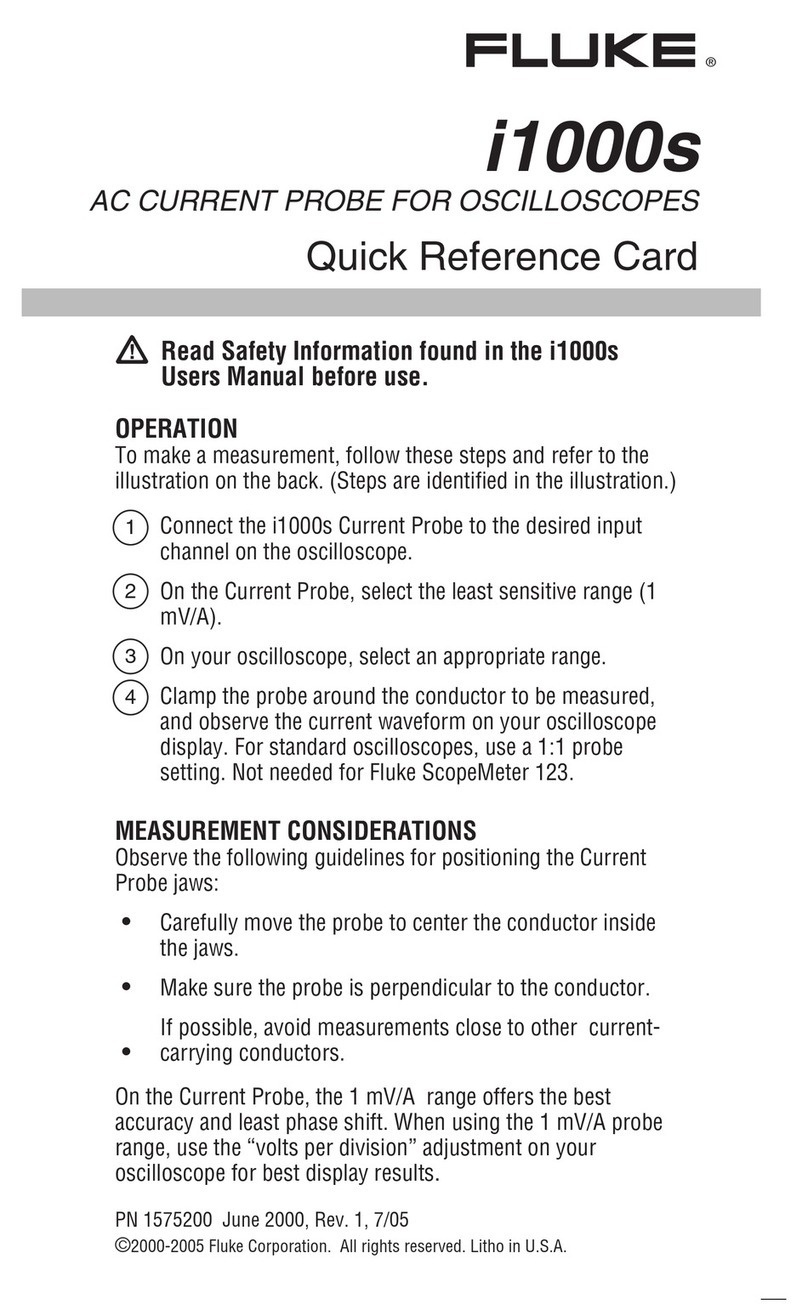
Fluke
Fluke i1000s Quick reference card
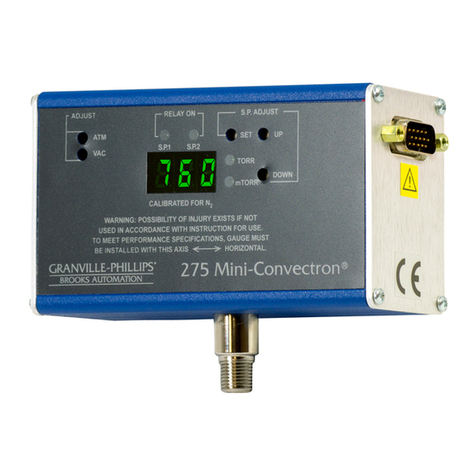
MKS
MKS Granville-Phillips Mini-Convectron 275... instruction manual
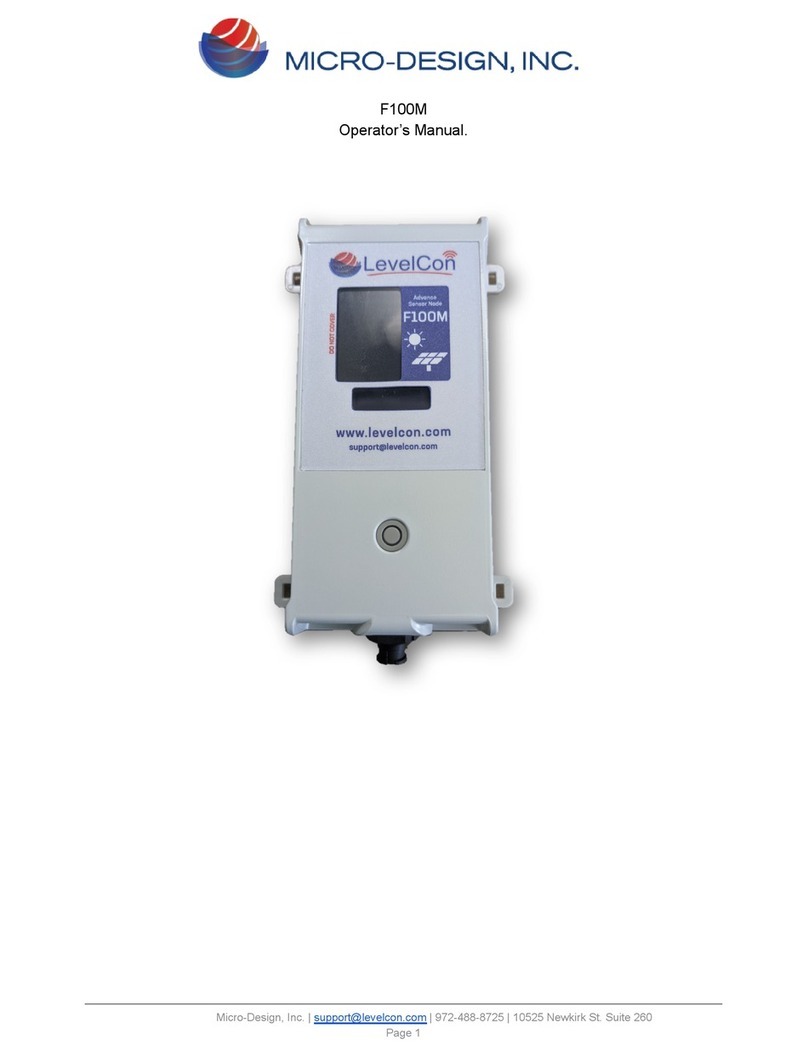
MICRO-DESIGN
MICRO-DESIGN F100MX Operator's manual
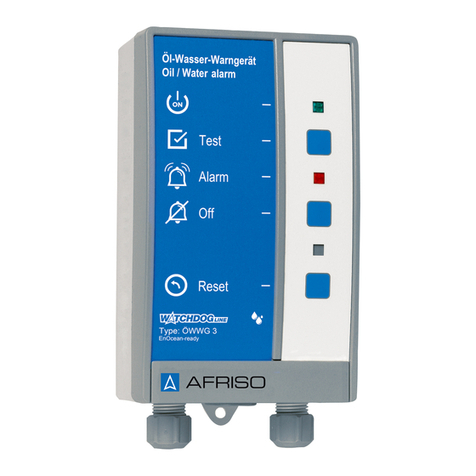
Afriso EURO-INDEX
Afriso EURO-INDEX OWWG 3 operating instructions
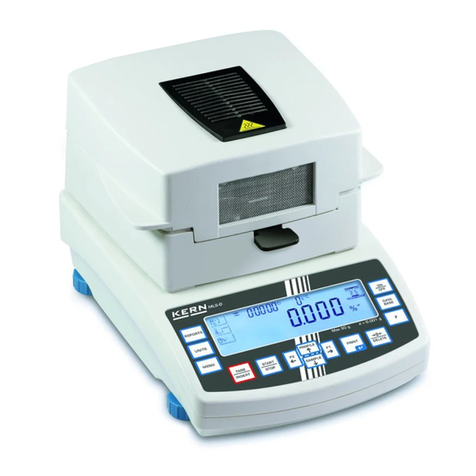
KERN
KERN MLS 50-3...N series Service manual
